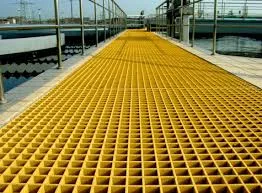
-
 Afrikaans
Afrikaans -
 Albanian
Albanian -
 Amharic
Amharic -
 Arabic
Arabic -
 Armenian
Armenian -
 Azerbaijani
Azerbaijani -
 Basque
Basque -
 Belarusian
Belarusian -
 Bengali
Bengali -
 Bosnian
Bosnian -
 Bulgarian
Bulgarian -
 Catalan
Catalan -
 Cebuano
Cebuano -
 China
China -
 China (Taiwan)
China (Taiwan) -
 Corsican
Corsican -
 Croatian
Croatian -
 Czech
Czech -
 Danish
Danish -
 Dutch
Dutch -
 English
English -
 Esperanto
Esperanto -
 Estonian
Estonian -
 Finnish
Finnish -
 French
French -
 Frisian
Frisian -
 Galician
Galician -
 Georgian
Georgian -
 German
German -
 Greek
Greek -
 Gujarati
Gujarati -
 Haitian Creole
Haitian Creole -
 hausa
hausa -
 hawaiian
hawaiian -
 Hebrew
Hebrew -
 Hindi
Hindi -
 Miao
Miao -
 Hungarian
Hungarian -
 Icelandic
Icelandic -
 igbo
igbo -
 Indonesian
Indonesian -
 irish
irish -
 Italian
Italian -
 Japanese
Japanese -
 Javanese
Javanese -
 Kannada
Kannada -
 kazakh
kazakh -
 Khmer
Khmer -
 Rwandese
Rwandese -
 Korean
Korean -
 Kurdish
Kurdish -
 Kyrgyz
Kyrgyz -
 Lao
Lao -
 Latin
Latin -
 Latvian
Latvian -
 Lithuanian
Lithuanian -
 Luxembourgish
Luxembourgish -
 Macedonian
Macedonian -
 Malgashi
Malgashi -
 Malay
Malay -
 Malayalam
Malayalam -
 Maltese
Maltese -
 Maori
Maori -
 Marathi
Marathi -
 Mongolian
Mongolian -
 Myanmar
Myanmar -
 Nepali
Nepali -
 Norwegian
Norwegian -
 Norwegian
Norwegian -
 Occitan
Occitan -
 Pashto
Pashto -
 Persian
Persian -
 Polish
Polish -
 Portuguese
Portuguese -
 Punjabi
Punjabi -
 Romanian
Romanian -
 Russian
Russian -
 Samoan
Samoan -
 Scottish Gaelic
Scottish Gaelic -
 Serbian
Serbian -
 Sesotho
Sesotho -
 Shona
Shona -
 Sindhi
Sindhi -
 Sinhala
Sinhala -
 Slovak
Slovak -
 Slovenian
Slovenian -
 Somali
Somali -
 Spanish
Spanish -
 Sundanese
Sundanese -
 Swahili
Swahili -
 Swedish
Swedish -
 Tagalog
Tagalog -
 Tajik
Tajik -
 Tamil
Tamil -
 Tatar
Tatar -
 Telugu
Telugu -
 Thai
Thai -
 Turkish
Turkish -
 Turkmen
Turkmen -
 Ukrainian
Ukrainian -
 Urdu
Urdu -
 Uighur
Uighur -
 Uzbek
Uzbek -
 Vietnamese
Vietnamese -
 Welsh
Welsh -
 Bantu
Bantu -
 Yiddish
Yiddish -
 Yoruba
Yoruba -
 Zulu
Zulu
Efficient Water Treatment Solutions Using FRP Desalination Piping and Fittings
Efficient Water Treatment The Role of FRP Desalination Pipes and Fittings
In the quest for sustainable freshwater resources, desalination has emerged as a viable solution in various regions facing water scarcity. As the process of converting seawater into potable water gains traction, the importance of efficient and reliable systems becomes paramount. One of the critical components of a successful desalination plant is the use of advanced materials for piping and fittings. Fiber Reinforced Polymer (FRP) has proven to be a game-changer in this field.
FRP pipes and fittings are engineered from composite materials that combine polymer resins with reinforcing fibers, typically glass or carbon. This unique composition bestows a range of benefits that are particularly advantageous for desalination applications. Firstly, FRP possesses excellent corrosion resistance, a vital property considering the saline environment it operates in. Unlike traditional materials such as metal or concrete that can degrade over time due to corrosion, FRP maintains its integrity and performance, ensuring a longer lifespan and reduced maintenance costs.
Moreover, the lightweight nature of FRP facilitates easier handling and installation. This characteristic can significantly reduce labor costs and time during construction, leading to quicker project completion times. In large-scale desalination projects, where efficiency is crucial, these advantages are particularly valuable.
frp desalination pipes and fittings for efficient water treatment

Another key benefit of FRP is its high strength-to-weight ratio. This property allows for thinner-walled pipes that can handle high pressures without compromising structural integrity. The reduced material consumption is not only cost-effective but also environmentally friendly, contributing to a lower carbon footprint for desalination plants. Additionally, FRP's smooth interior surfaces enhance flow efficiency, reducing the energy required for pumping seawater and treated water through the system.
The adaptability of FRP also means that it can be tailored to meet specific project requirements, including the ability to withstand high temperatures, varying salinity levels, and different pH environments. This versatility is crucial as desalination processes vary widely based on location and technology employed, such as reverse osmosis or multi-effect distillation.
Furthermore, FRP components can be manufactured to meet various standards and regulations, ensuring compliance with local and international guidelines. This attention to compliance not only enhances the reliability of the desalination systems but also builds trust with stakeholders and end-users.
In conclusion, the integration of FRP desalination pipes and fittings into water treatment facilities represents a forward-thinking approach to managing water scarcity. With their superior corrosion resistance, lightweight construction, and customization potential, FRP materials stand at the forefront of efficient water treatment technology. As we continue to innovate and adapt to changing global water needs, FRP will undoubtedly play a crucial role in shaping the future of desalination and water resource management.
Latest news
-
Exploring the Benefits of Top Hammer Drifter Rods for Enhanced Drilling PerformanceNewsJun.10,2025
-
High-Precision Fiberglass Winding Machine for GRP/FRP Pipe Production – Reliable & Efficient SolutionsNewsJun.10,2025
-
FRP Pipes & Fittings for Shipbuilding - Corrosion-Resistant & LightweightNewsJun.09,2025
-
Premium FRP Flooring Solutions Durable & Slip-ResistantNewsJun.09,2025
-
Premium Fiberglass Rectangular Tanks Durable & Lightweight SolutionNewsJun.09,2025
-
Tapered Drill String Design Guide Durable Performance & UsesNewsJun.09,2025









